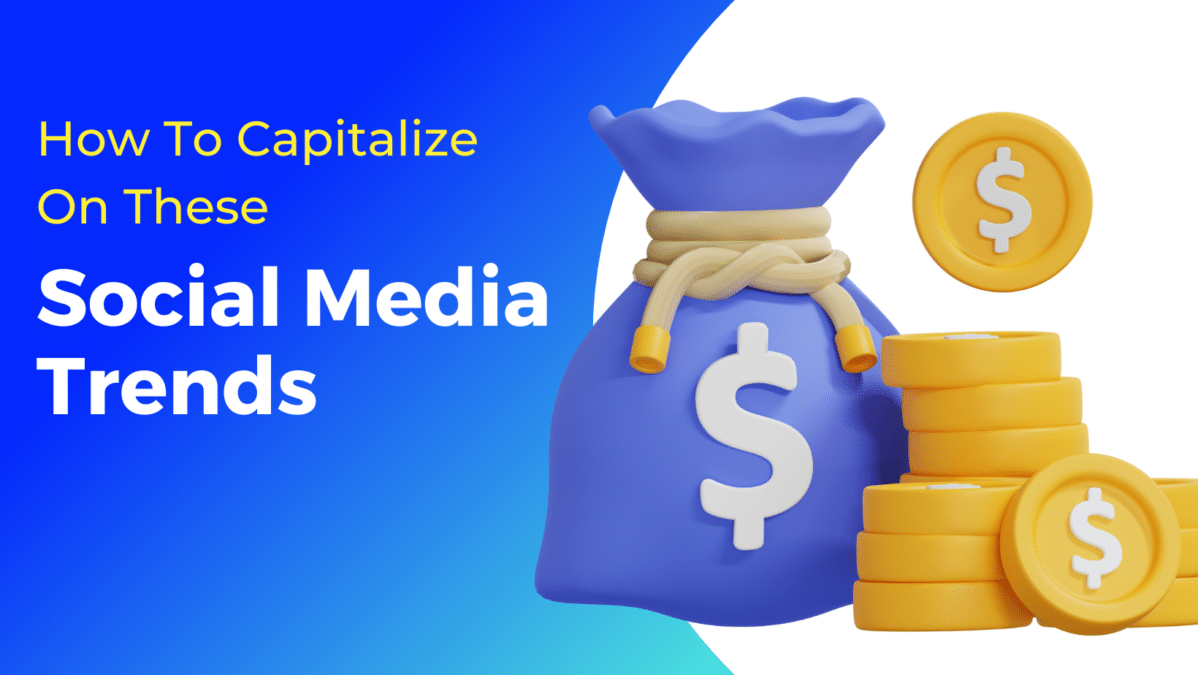
.net vs. .com, and More: What’s the Best Domain Extension?
January 10, 2022
How to Create Email Subject Lines Consumers will Actually Click
January 24, 2022Social Media Marketing Trends and How to Capitalize on Them
Over the past two years, we’ve seen a shift in the way brands promote their products or services on social media. Dominate social media this year with these trends
In the last couple of years, there has been a change in how brands advertise their products or services on social media. With the increasing popularity of social media, brands are not only concerned about how to attract large social media audiences in the upcoming year but also about the social media trends to anticipate in this constantly evolving environment.
Social Media Trends
Social media’s role in our daily lives is more significant than ever, evolving at a rapid pace. This evolution is reshaping how we interact, consume information, and make decisions. Understanding current social media trends is vital for businesses and individuals alike, as these platforms have become central to communication and marketing strategies. Let’s explore the latest trends in social media, providing insights into user behavior, platform growth, and the impact on digital marketing.
The Growth of Social Media
Between 2021 and 2022, the number of social media users surged by over 10%. This increase equates to an impressive 376 million new users, bringing the total to a staggering 4.62 billion. This figure represents over half of the global population and an astounding 93.4% of internet-connected individuals. Such growth suggests a shift in how people worldwide communicate, share, and consume information.
Global Saturation and Usage Patterns
Northern and Western Europe lead in social media saturation, with rates at 85% and 84%, respectively. Contrastingly, in Africa, this saturation varies widely, from 8% in Middle Africa to 45% in Southern Africa. On average, internet users now dedicate more than a third of their online time to social platforms, translating to about 1.25 years of engagement over a lifetime.
Social Media Dynamics in the United States
The United States significantly influences social media development, being the starting point for many major networks. It also hosts a large number of global social media participants. Currently, a minimum of 82% of American internet users participate in social media activities. This number is projected to increase to 257 million by the end of 2023. Additionally, most American adults are active across multiple social platforms, highlighting the varied and interconnected usage of social media.
Demographic Insights
The penetration of social media varies across age groups. Millennials are at the forefront with 90.4% being active users, followed by Gen X and Baby Boomers at 77.5% and 48.2%, respectively. Additionally, a substantial 90% of teenagers are active on these platforms, with 68% of the entire adult population in the US using social media.
Device Usage
The shift to mobile has been dramatic, with 91% of social media users accessing platforms through mobile devices. This trend underscores the necessity for marketers to optimize their content for mobile consumption.
Engagement and Content Preferences
A significant 84% of content sharing occurs outside of social media, indicating the broad reach of these platforms. Visual content, particularly videos, dominates social media engagement, with branded video content being shared by 74% of consumers. However, it’s notable that over 40% of users employ ad blockers, highlighting the challenge of reaching audiences through traditional advertising methods.
Influence on Consumer Behavior
Social media profoundly influences consumer purchases, with 97% of online shoppers accessing these platforms. Around 80% of consumers have made purchases influenced by social recommendations, particularly from influencers. This trend is especially pronounced among younger demographics, where social media ads have a substantial impact on purchasing decisions.
Brand Interaction
A majority of young internet users follow at least one brand on social media, with 43% using these platforms as a primary source of product information. Brand familiarity significantly influences consumer choices, and 70% of customers expect companies to use social media for customer service.
Expectations from Brands
Transparency and social consciousness are increasingly important for consumers on social media. Around 86% of Americans value transparency so highly that they will switch brands if it’s lacking. Furthermore, 70% expect brands to take public stands on social issues.
Leveraging Social Media in Marketing
An overwhelming majority of marketers recognize the importance of virtual social spaces in their strategies. Nearly all small business owners view social media as a critical marketing tool, with the primary benefit being increased brand exposure. Interestingly, long-term engagement in social media marketing correlates with higher sales figures.
(Source: https://nealschaffer.com/)
How to Capitalize on Social Media Marketing Trends
Here are a few steps your social team can take to leverage these trends, attract new audiences, and build a larger following:
Leverage video whenever possible. People love video right now, especially live video content, which feels especially authentic. Test out live video channels like IGTV or Facebook Live to see how they perform.
Create relatable content. Don’t be afraid to show a different side to your brand. Highlight customer stories; talk about your company’s larger mission or purpose; give us a “day in the life” of one of your employees. Go beyond your product or service to create a deeper connection with your audience.
Use a conversational tone. Create social media captions like you’re speaking to a friend. Of course, you’ll want to stick to your brand’s voice but play around with how you might converse with your audience through social channels. Consider asking your followers questions or telling stories to increase engagement levels.
Use design elements for snackable content. Test out memes, gifs, short videos, quick quizzes, fun infographics, etc., to figure out how you might attract and hold an audience’s attention even when they’re scrolling quickly through their feeds.
Quality over quantity. Audiences appreciate quality over quantity — consider how you might set up a schedule so you’re regularly posting content but not over-posting. Use analytics to determine the right cadence for your own brand.
Consider exploring new or unexpected social platforms to reach new audiences.
The Future of Social Media: A Key Tool for Businesses
Social media’s influence on consumer behavior and marketing strategies is significant and constantly changing. These trends highlight the critical need for businesses to maintain a robust presence on these platforms. A strong post engagement helps businesses connect with their audience, influence brand perception, and guide consumer choices. Effective strategies include creating captivating content and offering attentive customer service. The pivotal role of social media in defining the contemporary market is clear and undeniable.
As a social media marketer, the best thing you can do is to continue to research trends, online consumer behaviors, and your team’s social media data to determine which trends or strategies to lean into or how to navigate unprecedented online scenarios.
Need help with your social media plan? Contact Advent Trinity!
By Leslie Radford
**Updated November 2023




